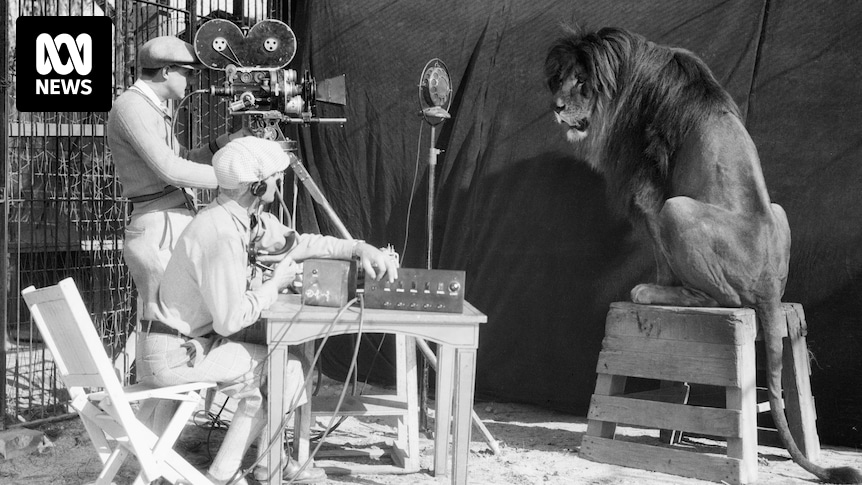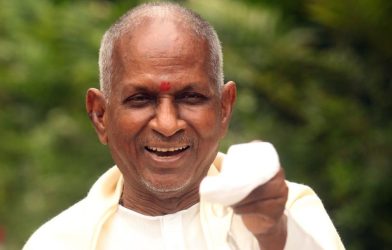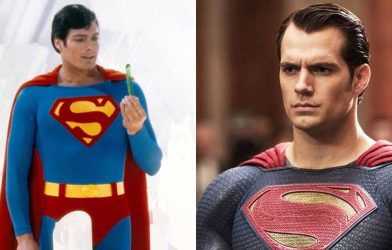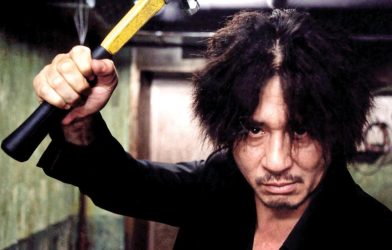“Ars gratia artis” – art for art’s sake.
Three words in Latin atop a now iconic roaring lion form the motto of one of the longest-running film studios in Hollywood history: Metro-Goldwyn-Mayer (MGM).
When it peaked, it reached for the stars, employing thousands and creating the world’s most famous films.
When it struggled, it fell deep.
This is MGM’s story.
‘Frankly my dear …’
In 1924, business magnate Marcus Loew had encountered a problem. He had purchased Metro Pictures Corporation five years before to provide a supply of films for his theatre chain.
The issue was his film selection lacked pizzazz.
To give it some spark he purchased Goldwyn Pictures — along with its mascot, a real-life roaring lion called Leo — in 1924.
This then caused another problem. Now he needed someone to oversee his new Hollywood operation. The solution was the head of Louis B Mayer Pictures, Louis B Mayer.
And so, on April 17, 1924, Metro Pictures, Goldwyn Pictures and Louis B Mayer Pictures came together to become one of the biggest Hollywood Golden Age studios.
And those studios wielded immense power, says Sydney University chair of film studies Bruce Isaacs.
The studios – namely the big five of MGM, RKO, 20th Century Fox, Warner Bros and Paramount Pictures – controlled every aspect of the movies from who the actors were to where they would be shown.
Studios not only owned the cinemas their films were shown in, they also owned the actors, who were bound by rigid contracts and told which films they would be appearing in, he said.
MGM’s golden stars included Clark Gable, Donna Reed, Frank Sinatra, Judy Garland, Katherine Hepburn and even a dog named Pal (better known as Lassie).
When MGM was at its peak in the 1930s, it was producing a film about every nine days. Comparatively, in 2023 MGM released six films.
In the 30s it was dominating the box office releasing Gone with the Wind, Trader Horn and The Shining Hour.
Gone with the Wind, starring Clark Gable and Vivien Leigh, would go on to become one of the highest-grossing films of all time, earning more than $US4,200 billion (in today’s money, adjusted for inflation).
Steve Bingen, a film historian and author of multiple books about MGM, says the studio largely created the idea of movie franchises, which would become majorly important to modern cinema.
“In the 1930s, sequels were occasionally created for popular films but only inadvertently after the first film proved successful,” he said.
“But MGM, with Tarzan and Andy Hardy and the Thin Man largely innovated the idea of a series of films with continuing plots and characters.
“[This] of course, would later plant the seeds for situation comedies, trilogies, franchises, cinematic universes, and for long-form episodic storytelling in general.”
Singin’ and dancin’
Each of the big five studios had something they wanted to be the lead in. For MGM that was glamour.
For the studio whose early motto was “more stars than there are in heaven” the actors were made to live the life the studio depicted: full of glitz and glamour. And to ensure that, as Slate Magazine reported, a fixer named Eddie Mannix was on the payroll to keep the stars in line and ensure scandal never made it to the media.
If there was one thing MGM was more famous for than glamour, it was making musicals.
“MGM made musicals extremely modern — it was the high point of musicals in Hollywood,” Dr Isaacs said.
They found the man who could bring the MGM musical to life — Arthur Freed.
He had been working on the vaudeville piano circuit, writing for the Marx Brothers when he was hired by MGM.
After his work as an uncredited associate producer on The Wizard of Oz in 1939, MGM gave Freed his own production unit just for musicals.
The Freed Unit, based in Culver City, was made up of the finest writers, directors, composers and stars he could find including directors Vincente Minnelli and Charles Walters, songwriter Roger Edens, designer and producer Lemuel Ayers and choreographer Michael Kidd.
The songs Singin’ in the Rain, Good Morning and You Were Meant for Me, all still well known today, were birthed in the Freed Unit.
The movies that followed proved major successes, among them Babes In Arms, Singin’ in the Rain and An American in Paris.
“They kind of pioneered what a musical could be,” Dr Isaacs said.
“Those were the biggest films. And they won several Oscars for it. But also just made extraordinary box office out of that era.”
At the worldwide box office, Singin’ in the Rain earned, $US7.2 million, The Wizard of Oz $US35.3 million and Meet Me at St Louis made $US12.8 million.
Musicals have always been the hardest genre to pull off, Mr Bingen says, due to the sheer number of people required to make them.
“There has to be an existing infrastructure of compatible composers and dancers and singers and choreographers and lyricists and musicians in place and on staff to pull off successful musicals consistently,” he said.
“And MGM had that, to a greater degree than any other studio or any other collection of comparably talented artisans in recorded human history.”
I don’t think we’re in Hollywood anymore
Dr Isaacs says much of Hollywood was struggling going into the 1970s for two reasons.
Firstly: the 1948 Paramount Decree – which meant production companies could no longer own theatres. Secondly: the invention of television.
MGM had a number of missteps along the way — the studio was one of the last to go into sound cinema.
A number of their releases also did very poorly at the box office, including 1962’s Mutiny on the Bounty, which lost the company $US6 million.
In 1969, a Las Vegas tycoon by the name of Kirk Kerkorian entered the picture.
His interests were primarily in real estate – but he saw the value MGM’s glamorous reputation could bring to a Las Vegas hotel and casino. He purchased a 40 per cent stake in the company.
“Kirk Kerkorian… realised that Leo the Lion, that MGM’s logo, was, arguably, the most recognised in the world,” Mr Bingen said.
“And he imagined using that logo as his public face for the rest of his empire. He succeeded, although ironically, he was never able to make the brand successful in Hollywood itself.”
During this time Mr Bingen said Kerkorian bought and sold the company three times, each time stripping off its assets and putting “the worst possible individual” at the helm.
“In 1990, [MGM was sold] to an Italian gangster — who might have been able to manage one of Kerkorian’s casinos in Las Vegas quite nicely, but only sullied Leo’s reputation in Hollywood,” he said.
“That year at the Academy Awards Billy Crystal joked on stage that in the future Leo wouldn’t be roaring but rather taking the fifth.”
Despite the successes of Ben-Hur (1959), The Wizard of Oz (1939) and Gone with the Wind (1939), MGM was running low on money.
To make up for the dwindling funds, Kerkorian held a fire sale auction on May 3, 1970, which lasted two weeks and sold decades worth of film memorabilia.
The sale was reported to have netted $US8 million to $US10 million and sold off everything from Ben-Hur chariots to multiple pairs of ruby slippers.
Ruby slippers
Movie: The Wizard of Oz
Price: $US15,000
The Ruby slippers from the Wizard of Oz were the highest bid of the auction with one pair selling for $US15,000 to a mystery buyer only known as a South Californian millionaire. United Press International reported at the time the buyer’s representative was authorised to bid as much as $US22,000. Nine years later the slippers were donated to the Smithsonian museum.
Cotton Blossom
Movie: Showboat
Price: $US15,000
Texas oil millionaire Lamar Hunt purchased the boat Cotton Blossom along with Victrix, and multiple other small ships, for a winning bid of $15,000. The Cotton Blossom was one of two full-size ships located at the Worlds of Fun theme park from 1973 until 1995.
Cowardly Lion
Movie: The Wizard of Oz
Price: $US2,400
The costume was sold to a doctor from West Covina who told the New York Times he “saw The Wizard of Oz when I was 5 years old and found the picture continuing to haunt me through the years.
“The costume isn’t an investment. No one will ever wear the costume again.”
Other notable sales included a Clark Gable trench coat for $US1,250, Elizabeth Taylor’s wedding dress in Father of the Bride selling for $US650 and Spencer Tracy’s morning coat for $US125.
Some items didn’t sell at all. They were sent to the MGM Grand in Las Vegas to be sold in the gift shop and used as decorations.
“1970 would have been a very, very difficult time for MGM. Well, it was a tough time for all of US studios that should be said. But MGM was always flirting with bankruptcy,” Dr Isaacs said.
The auction upset many, including stars of the movies. Actress Debbie Reynolds, who spent about $US180,000 at the auction told PEOPLE magazine:
“I think everybody took it for granted it would stay forever and we were stunned when they had it. People paid no money for everything. All their beautiful costumes sold for $50 and [were] just given away as Halloween costumes.”
“MGM was like Camelot or Oz or some fantasy kingdom, which mere mortals had never been able to visit before,” Mr Bingen said.
“And yet suddenly the gates to that kingdom were thrown open and anyone with a dime or a dollar could wander inside and rummage through Greta Garbo’s underwear or try on Fred Astaire’s tap shoes. It seemed indescribably grotesque. It still does.
“And it could have been avoided or handled more delicately had management at the studio bothered to understand or care that they were savaging the dreams of at least five generations of movie-goers.”
Bond, James Bond
Through it all there was one franchise credited with saving MGM from the brink of bankruptcy multiple times.
The first James Bond film, Doctor No, hit screens in 1962 with Sean Connery as the leading man.
The film was produced by an arm of MGM called United Artist (UA), a wing of the company looking to establish itself as a boutique art-house producer.
Under pressure, they decided to make the Bond film, a move which proved a roaring success.
It ultimately brought in $US59.5 million at the box office — about $US611.4 million in today’s money.
Already popularised by the Ian Fleming novels, as Matthew Surridge writes in Splice Today: “The early- and mid-1960s were near the height of the Cold War, and the idea of a spy in the service of democracy meant something then that it doesn’t now.”
“It propped MGM back up onto the world stage as one of the great studios,” Dr Isaacs said.
The success of Bond continued through each of the releases.
007: Goldfinger, released in 1964 has a 99 per cent critic rating on Rotten Tomatoes.
The franchise now comprises 25 films which have grossed over $US7.04 billion in total at the box office.
It gave MGM a second boom in 1995 with the release of GoldenEye, this time starring Pierce Bronson — bringing MGM $US356.4 million at the box office.
The Bond love continued.
Die Another Day earned $US431.9 million worldwide and was the sixth highest-grossing film of 2002 and Skyfall brought in a massive $US1.1 billion in 2012.
John Logan, screenwriter for two Bond films, wrote in the New York Times: “Corporate partners come and go, but James Bond endures.”
No longer bigger than Ben-Hur
MGM fell into bankruptcy in 2010, prompting a reorganisation later in the year.
It wasn’t enough for the former powerhouse studio to put its troubles behind it.
In 2021, Amazon purchased a 50 per cent stake in MGM Studios for $US8.45 billion. Like so many of MGM’s moves, the purchase was met with scepticism.
However, Mr Bingen said it was better for Amazon to take hold of Leo’s leash than any other studio or media company, comparing it to Disney’s purchase of 20th Century Fox which resulted in job losses due to duplicated positions.
“That carnage doesn’t happen, or happens less when the buyer is an outsider,” he said.
“The downside is that Amazon’s corporate mentality is that of a tech company, which doesn’t always mesh well with the whole creative, relationship-based dynamic which makes Hollywood tick.
“In the past, when an outside entity has bought into Hollywood, the trend has always been to second guess the people who already make movies for a living.”
Despite MGM’s trials and tribulations, with its market share down to less than 2 per cent, MGM’s legacy continues.
It is still considered by many the biggest of the Golden Age five.
“MGM, no matter what happens to it in its next breathless hundred years, is both immortal and very much of its time, that time being the so-called golden era of Hollywood,” Mr Bingen said.
“Because it’s kind of sealed in amber within that era it’s hard to imagine any other entity, be it a legacy studio or new media upstart ever achieving the sort of reputation or recognition which MGM still commands, or the commercial viability which they once boasted of either.
“So, I have to agree with Frank Sinatra, who once said about his old studio that ‘you can wait around and hope, but I tell ya, you’ll never see the likes of this again’.”









